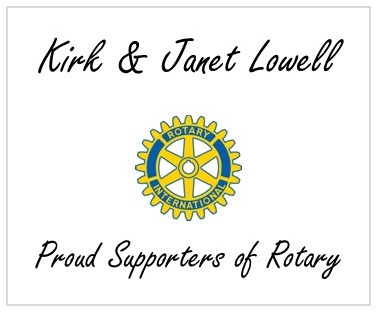Embracing the true potential of Rotary
From Rotary Voices Blog
By Mara B. Huber, PhD, past president of the Rotary Club of Buffalo-Sunrise, New York, USA

A well donated by the Rotary Club of Buffalo Sunrise and partnering clubs to benefit Kitenga in Tanzania.
I am not a joiner. On the contrary, I have gone to great lengths to avoid all groups with official names and rules. I have zero interest in badges or titles or joining committees. And the words “fellowship” and “oath” evoke a reflexive need to escape and hide.
And yet I am a Rotarian, and amazingly, a very enthusiastic and proud one. What draws me to Rotary?
It’s not the club meetings, the programs, or projects. It’s not even the amazing contributions that Rotarians make to communities around the world.
For me, it’s the system — a system that is remarkably robust and nimble, organized entirely around the notion of service above self, a mission that is both powerful and unifying.
All layers of the Rotary system — from clubs, to districts and zones, to Rotary International, and The Rotary Foundation — are designed to amplify and leverage the contributions of individual Rotary members toward the greatest impact.
To be clear, Rotary is not a panacea, nor is it perfect in its current manifestations. A tour of Rotary clubs will reveal surprising variability, with some clinging to tradition at the cost of relevance, and diversity uneven at best (and often much worse). And you will quickly learn that women have only been officially accepted since 1987, with no woman serving as president of Rotary International to date.
Clearly, Rotary has yet to reach its full potential. But as a model for community and world development it is like none other that I have found.
From an infrastructure standpoint it is both lean and transparent. Leaders serve one-year terms with no financial or political benefits. Unlike our educational system, Rotary truly is a pipeline with programs focused on youth, young professionals, and adults who can contribute well into their senior years.
The system is built around individual clubs, with districts offering support and resources to ensure health and sustainability, even in the face of continually changing membership, leadership, and community context.
This is perhaps my favorite aspect of the Rotary system. Despite its size, complexity, and dynamic nature it is inherently elegant and nimble enough to flex and pivot with the changing needs of the world. And like any robust system, it must also continue to attract members who seek the experiences it affords.
While historically, Rotary has sustained itself largely on those who enjoy the benefits of fellowship, networking, and the status that is often associated with membership, the inner and outer workings of the system have gone largely unseen.
But today our communities are experiencing deeper and more systemic challenges than ever before. And at the same time, people of all ages are yearning for a more meaningful connection with the world.
Fortunately, Rotary is poised to deliver on both ends. And as a model it is scalable, sustainable, and highly accessible to all who are ready to engage.
It is time we embrace Rotary for all that it has to offer.
Download the website sponsorship guide












